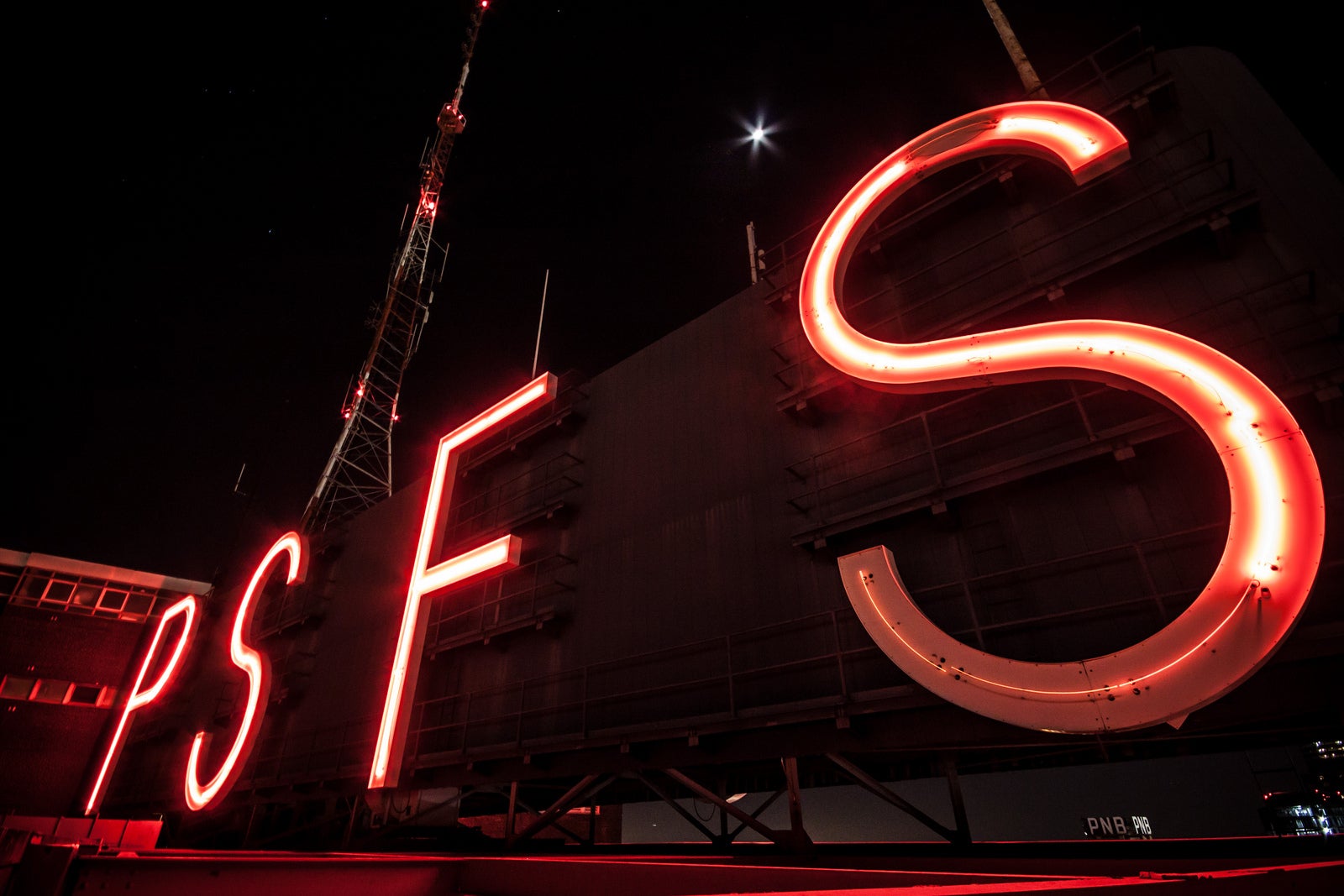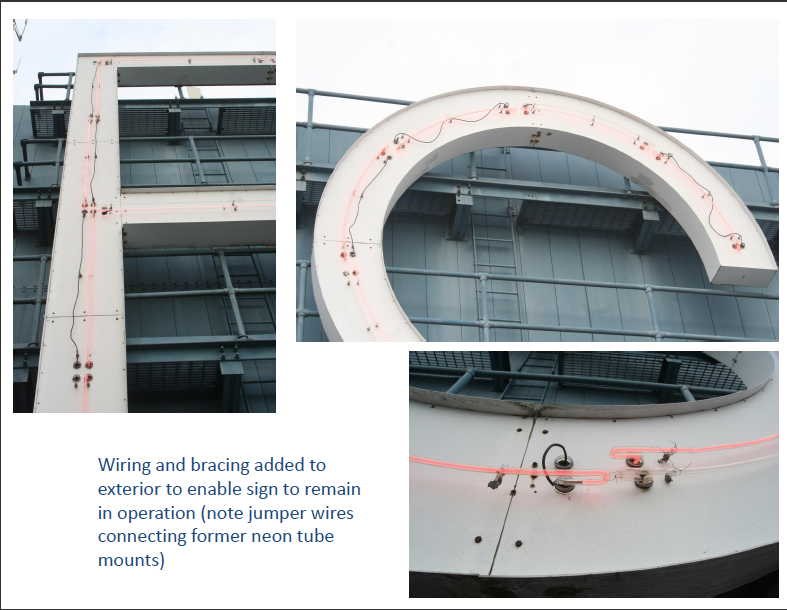PSFS lighting: Committee rejects switch from neon to LED

Four letters have spelled Philly since 1932: PSFS.
High above 12th and Market streets, two 26-foot high PSFS signs have been illuminated by parallel tubes of red neon for 83 years.
Now the landmark building’s owners and consultants contend that the sign lighting systems are at the end of their serviceable life, and it’s time for a 21st century replacement.
The PSFS building was individually listed in the Philadelphia Register of Historic Places in 1968, and was designated a National Historic Landmark in 1976. The local designation means any changes to the exterior require Philadelphia Historical Commission approval.
On Tuesday Heritage Consulting Group presented an application on behalf of Loews Philadelphia Hotel to the commission’s Architectural Committee to convert the PSFS sign’s illumination from neon to Light Emitting Diodes (LED) designed to closely match the original color and intensity.
The committee, which offers advisory recommendations to the commission, unanimously rejected the LED proposal voicing several concerns. Commission staff did not recommend approval of the application because the applicants did not demonstrate that it is not feasible to restore the sign.
Loews, which has operated the PSFS building as a hotel since 2000, argued that safely maintaining the sign is a challenge, as is keeping all letters illuminated. What were once parallel tubes of neon have been reduced to disjointed single runs of neon, the result of years of temporary fixes aimed at keeping the lights on.
The application package states that the building’s head engineer says the sign can’t even be powered down at this point because “each time the power is cycled, at least one section of the sign goes dark due to damaged electrical wiring.”
Though neon restoration could be cheaper the applicants said the conversion to LED would help Loews meet its corporate sustainability targets, save on energy costs, and require less frequent repairs.
“Loews is committed to keeping the sign lit,” Danny Smith, a Loews representative, told the committee.
Heritage Consulting’s Cindy Hamilton noted that Loews is trying to be a good Philadelphia citizen, but it is under no obligation to keep the sign illuminated. Indeed before the hotel conversion the letters were dark for most of the 1990s.
While some committee members were open to the idea of LEDs, they were not persuaded by the application. The applicants, they said, had not demonstrated that replacing the neon in-kind – which would effectively require rebuilding the neon system – was infeasible.
The proposed LED design would mimic the neon tubes with two lines of light set in a box. Committee members felt that an LED mockup installed on one section of the sign looked convincing when viewed head on, some had concerns about how the sign would be visible from oblique views. While tubes of neon are meant to reflect off of the coated surface of the sign’s letters, they wondered if the boxed LEDs would glow as visibly. (As of this writing, the mockup is still on the sign – bonus points for the person who can name what letter it is on.)
The application argues that unlike art neon signs, the use of neon on the PSFS sign was simply the chosen vehicle for illumination. Commission staffer Randal Baron said, however, that staff regards the neon as an artifact in its own right.
The PSFS sign was a pioneering example of integrating illuminated graphics into architecture, designed as part of George Howe and William Lescaze’s bold International Style skyscraper. The sign is a defining feature on the most important building added to Philadelphia in the 20th century.
“This is an icon we need to treat as respectfully as possible,” said the Preservation Alliance for Greater Philadelphia’s Advocacy Director Patrick Grossi in a public comment. The owners, he said, should make every effort to restore the neon. Plus, he expressed trepidation that an LED sign could open the door to different colors being programmed instead of the sign’s trademark red. (Imagine a green PSFS on a big Eagles game day.)
Neon artisan and historian Len Davidson also commented that the PSFS sign’s neon system has been so badly compromised and rigged that it’s stressed, by design. In his estimation a rebuilt, well-balanced neon system would be more enduring than LEDs, which do not perform especially well in high-humidity, bad weather, and high-up installations. Neon, Davidson said, has a long track record while we don’t know the true longevity of LEDs.
The Historical Commission will review the application to turn PSFS from neon to LED at its meeting on Friday, June 12.

WHYY is your source for fact-based, in-depth journalism and information. As a nonprofit organization, we rely on financial support from readers like you. Please give today.




